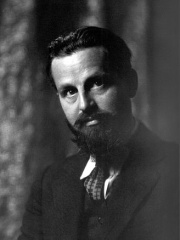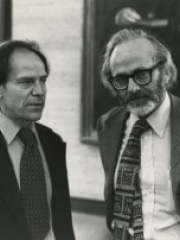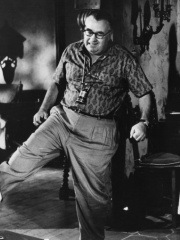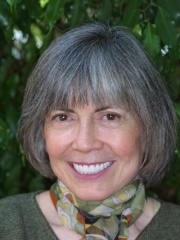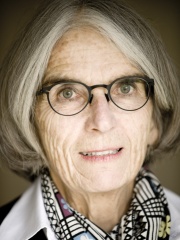WRITER
Richard Matheson
1926 - 2013

 Richard Matheson
Richard Matheson
Richard Burton Matheson (February 20, 1926 – June 23, 2013) was an American author and screenwriter, who worked primarily in the fantasy, horror, and science fiction genres. He is best known as the author of I Am Legend, a 1954 science fiction horror novel that has been adapted for the screen three times. Matheson himself was co-writer of the first film version, The Last Man on Earth, starring Vincent Price, which was released in 1964. The other two adaptations were The Omega Man, starring Charlton Heston, and I Am Legend, with Will Smith. Read more on Wikipedia
His biography is available in 52 different languages on Wikipedia (up from 51 in 2024). Richard Matheson is the 1,206th most popular writer (down from 986th in 2024), the 1,717th most popular biography from United States (down from 1,135th in 2019) and the 138th most popular American Writer.
Richard Matheson is most famous for his horror novel "I Am Legend" which was adapted into a film starring Will Smith.
Memorability Metrics
Page views of Richard Matheson by language
Among WRITERS
Among writers, Richard Matheson ranks 1,206 out of 7,302. Before him are Kazi Nazrul Islam, Gabrielle-Suzanne de Villeneuve, Lü Dongbin, Matthias Flacius, Symeon the New Theologian, and Jan Długosz. After him are Rex Stout, Rudolf von Sebottendorf, Diana Mosley, Irwin Shaw, Khushal Khattak, and Noah Gordon.
Most Popular Writers in Wikipedia
Go to all RankingsKazi Nazrul Islam
1899 - 1976
HPI: 66.93
Rank: 1,200
Gabrielle-Suzanne de Villeneuve
1685 - 1755
HPI: 66.91
Rank: 1,201
Lü Dongbin
796 - 870
HPI: 66.91
Rank: 1,202
Matthias Flacius
1520 - 1575
HPI: 66.91
Rank: 1,203
Symeon the New Theologian
949 - 1022
HPI: 66.91
Rank: 1,204
Jan Długosz
1415 - 1480
HPI: 66.90
Rank: 1,205
Richard Matheson
1926 - 2013
HPI: 66.89
Rank: 1,206
Rex Stout
1886 - 1975
HPI: 66.87
Rank: 1,207
Rudolf von Sebottendorf
1875 - 1945
HPI: 66.86
Rank: 1,208
Diana Mosley
1910 - 2003
HPI: 66.86
Rank: 1,209
Irwin Shaw
1913 - 1984
HPI: 66.86
Rank: 1,210
Khushal Khattak
1613 - 1689
HPI: 66.86
Rank: 1,211
Noah Gordon
1926 - 2021
HPI: 66.86
Rank: 1,212
Contemporaries
Among people born in 1926, Richard Matheson ranks 87. Before him are Konstantinos Stephanopoulos, Dennis W. Sciama, Robert Fogel, Michel Butor, David H. Hubel, and Ta Mok. After him are Noah Gordon, George C. Williams, Cayetana Fitz-James Stuart, 18th Duchess of Alba, Heikki Hasu, César Pelli, and Shigeo Sugimoto. Among people deceased in 2013, Richard Matheson ranks 60. Before him are Gyula Horn, Robert Fogel, Tadeusz Mazowiecki, David H. Hubel, Seki Matsunaga, and Viktor Kulikov. After him are Antoni Ramallets, Manfred Rommel, Ronald Dworkin, Hiroshi Yamauchi, Pierre Mauroy, and Kenneth Waltz.
Others Born in 1926
Go to all RankingsKonstantinos Stephanopoulos
POLITICIAN
1926 - 2016
HPI: 67.30
Rank: 81
Dennis W. Sciama
PHYSICIST
1926 - 1999
HPI: 67.24
Rank: 82
Robert Fogel
ECONOMIST
1926 - 2013
HPI: 67.24
Rank: 83
Michel Butor
WRITER
1926 - 2016
HPI: 67.04
Rank: 84
David H. Hubel
PHYSICIAN
1926 - 2013
HPI: 67.03
Rank: 85
Ta Mok
MAFIOSO
1926 - 2006
HPI: 66.93
Rank: 86
Richard Matheson
WRITER
1926 - 2013
HPI: 66.89
Rank: 87
Noah Gordon
WRITER
1926 - 2021
HPI: 66.86
Rank: 88
George C. Williams
BIOLOGIST
1926 - 2010
HPI: 66.75
Rank: 89
Cayetana Fitz-James Stuart, 18th Duchess of Alba
POLITICIAN
1926 - 2014
HPI: 66.69
Rank: 90
Heikki Hasu
SKIER
1926 - 2025
HPI: 66.58
Rank: 91
César Pelli
ARCHITECT
1926 - 2019
HPI: 66.51
Rank: 92
Shigeo Sugimoto
SOCCER PLAYER
1926 - 2002
HPI: 66.50
Rank: 93
Others Deceased in 2013
Go to all RankingsGyula Horn
POLITICIAN
1932 - 2013
HPI: 67.33
Rank: 54
Robert Fogel
ECONOMIST
1926 - 2013
HPI: 67.24
Rank: 55
Tadeusz Mazowiecki
WRITER
1927 - 2013
HPI: 67.15
Rank: 56
David H. Hubel
PHYSICIAN
1926 - 2013
HPI: 67.03
Rank: 57
Seki Matsunaga
SOCCER PLAYER
1928 - 2013
HPI: 66.96
Rank: 58
Viktor Kulikov
MILITARY PERSONNEL
1921 - 2013
HPI: 66.95
Rank: 59
Richard Matheson
WRITER
1926 - 2013
HPI: 66.89
Rank: 60
Antoni Ramallets
SOCCER PLAYER
1924 - 2013
HPI: 66.88
Rank: 61
Manfred Rommel
POLITICIAN
1928 - 2013
HPI: 66.86
Rank: 62
Ronald Dworkin
PHILOSOPHER
1931 - 2013
HPI: 66.73
Rank: 63
Hiroshi Yamauchi
BUSINESSPERSON
1927 - 2013
HPI: 66.72
Rank: 64
Pierre Mauroy
POLITICIAN
1928 - 2013
HPI: 66.56
Rank: 65
Kenneth Waltz
PHILOSOPHER
1924 - 2013
HPI: 66.05
Rank: 66
In United States
Among people born in United States, Richard Matheson ranks 1,717 out of 20,380. Before him are Donna Reed (1921), Robert Aldrich (1918), Alan Silvestri (1950), Elias James Corey (1928), Robert Patrick (1958), and Suzy Amis Cameron (1962). After him are Joseph Cotten (1905), Rex Stout (1886), John Forsyth (1780), Irwin Shaw (1913), Noah Gordon (1926), and Mark Spitz (1950).
Others born in United States
Go to all RankingsDonna Reed
ACTOR
1921 - 1986
HPI: 66.91
Rank: 1,711
Robert Aldrich
FILM DIRECTOR
1918 - 1983
HPI: 66.91
Rank: 1,712
Alan Silvestri
COMPOSER
1950 - Present
HPI: 66.90
Rank: 1,713
Elias James Corey
CHEMIST
1928 - Present
HPI: 66.90
Rank: 1,714
Robert Patrick
ACTOR
1958 - Present
HPI: 66.89
Rank: 1,715
Suzy Amis Cameron
ACTOR
1962 - Present
HPI: 66.89
Rank: 1,716
Richard Matheson
WRITER
1926 - 2013
HPI: 66.89
Rank: 1,717
Joseph Cotten
ACTOR
1905 - 1994
HPI: 66.87
Rank: 1,718
Rex Stout
WRITER
1886 - 1975
HPI: 66.87
Rank: 1,719
John Forsyth
POLITICIAN
1780 - 1841
HPI: 66.87
Rank: 1,720
Irwin Shaw
WRITER
1913 - 1984
HPI: 66.86
Rank: 1,721
Noah Gordon
WRITER
1926 - 2021
HPI: 66.86
Rank: 1,722
Mark Spitz
SWIMMER
1950 - Present
HPI: 66.86
Rank: 1,723
Among WRITERS In United States
Among writers born in United States, Richard Matheson ranks 138. Before him are Irving Stone (1903), Danielle Steel (1947), Anne Rice (1941), Donna Leon (1942), Michael Connelly (1956), and Marshall Rosenberg (1934). After him are Rex Stout (1886), Irwin Shaw (1913), Noah Gordon (1926), Robert Sheckley (1928), Richard Henry Dana Jr. (1815), and Valerie Solanas (1936).
Irving Stone
1903 - 1989
HPI: 67.17
Rank: 132
Danielle Steel
1947 - Present
HPI: 67.14
Rank: 133
Anne Rice
1941 - 2021
HPI: 67.03
Rank: 134
Donna Leon
1942 - Present
HPI: 67.02
Rank: 135
Michael Connelly
1956 - Present
HPI: 66.99
Rank: 136
Marshall Rosenberg
1934 - 2015
HPI: 66.97
Rank: 137
Richard Matheson
1926 - 2013
HPI: 66.89
Rank: 138
Rex Stout
1886 - 1975
HPI: 66.87
Rank: 139
Irwin Shaw
1913 - 1984
HPI: 66.86
Rank: 140
Noah Gordon
1926 - 2021
HPI: 66.86
Rank: 141
Robert Sheckley
1928 - 2005
HPI: 66.78
Rank: 142
Richard Henry Dana Jr.
1815 - 1882
HPI: 66.62
Rank: 143
Valerie Solanas
1936 - 1988
HPI: 66.61
Rank: 144






